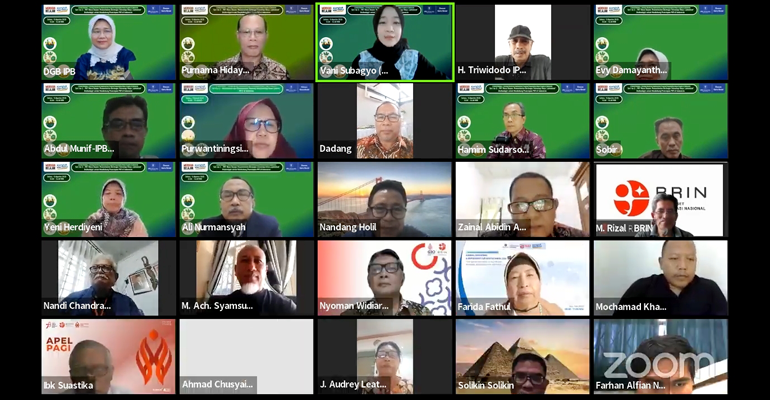IPB University Board of Professors Discuss the Urgency of Data Accuracy and the Use of the Latest Technology for Future PHT

The Board of Professors (DGB) of IPB University held a webinar with the theme “Future PHT: Utilization of Various Advanced Technologies to Support the Implementation of PHT in Indonesia,” 8/15. This webinar seeks to revive the spirit of Integrated Pest Control (PHT) in the future by combining data and technology.
This activity presents IPB University lecturers, academics from Indonesian universities, and the government to thoroughly explore and recommend the use of current technology to support the PHT program.
Dr Yeni Herdiyeni, IPB University lecturer from the Faculty of Mathematics and Natural Sciences discussed the importance of using IoT (Internet of Things) and artificial intelligence (AI) in the implementation of integrated pest control (PHT). He explained that IoT and artificial intelligence can be the basis for the implementation of intelligent agriculture and the development of PHT 4.0.
“IoT and AI technology can be developed into mobile technology as a digital library, plant disease identification system, and plant disease spread control system, to data transmission from the field to the centre,” he explained.
The IPB University lecturer explained, the use of deep learning on AI can also measure the severity of plant diseases, no longer just using guidebooks. Currently he is also developing a graph-based PHT system and ontology that is not only image-based.
Meanwhile, Dr Ali Nurmansyah, Head of the Plant Protection Department, Faculty of Agriculture IPB University, explained that AI technology will be increasingly needed in plant monitoring. According to him, there needs to be an alternative Plant Disturbing Organism (OPT) observation method that is able to provide more accurate, short, and real time OPT attack data.
“Currently our OPT monitoring practice still relies on direct and mobile observation, this method produces less accurate data, the calculation of the level of economic damage also becomes less accurate so there needs to be a development of digital technology in OPT monitoring,” he said.
Meanwhile, Dr Akhmad Arifin Hadi, IPB University lecturer from the Department of Landscape Architecture, said that the accuracy and actuality of the data is indeed very necessary for current development. This is because PHT is closely related to spatial planning. According to him, participatory mapping is one way to fill the harmony between spatial planning and PHT on the site scale.
“Participatory mapping based on geotagged photos needs to be considered by the government to become a regulation in the acquisition of agricultural field data which is then processed for decision making in various administrative skaks,” he said. (MW/ra) (IAAS/MKY)



